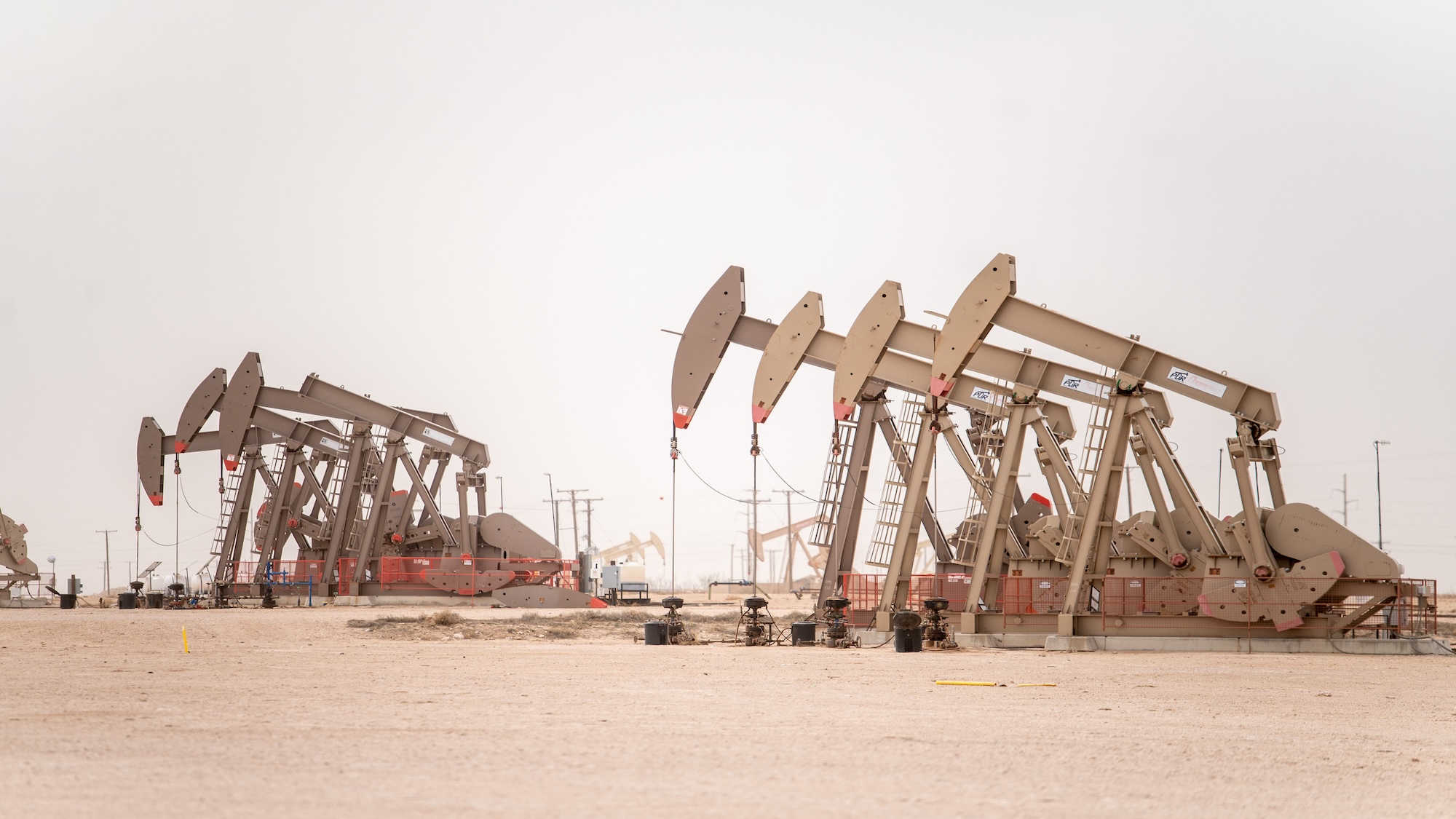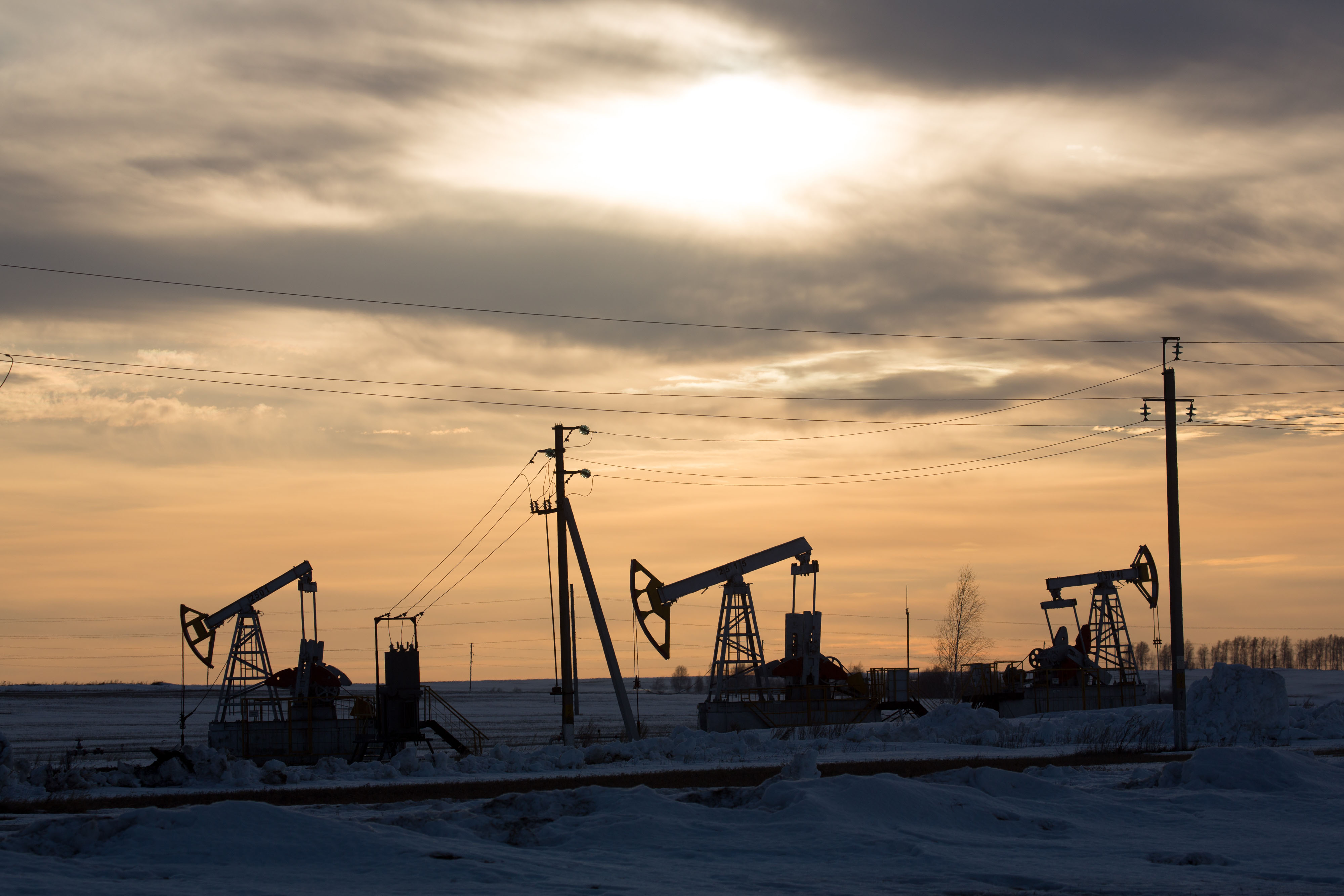Oil price posts two-year highs - but how long can it last?
Brent rose above $59 a barrel this week, its best third-quarter showing since 2004

Oil price spikes after US air strikes on Syria
7 April
Oil was all set for a "tepid" trading day, says Reuters, before news emerged of Donald Trump launching air strikes in Syria.
After trading below $55 and being on the wane, Brent crude, the international oil price benchmark, surged above $56 a barrel.
The Week
Escape your echo chamber. Get the facts behind the news, plus analysis from multiple perspectives.

Sign up for The Week's Free Newsletters
From our morning news briefing to a weekly Good News Newsletter, get the best of The Week delivered directly to your inbox.
From our morning news briefing to a weekly Good News Newsletter, get the best of The Week delivered directly to your inbox.
This morning it was holding on to gains of 1.5 per cent at above $55.70 a barrel, while its US counterpart, West Texas Intermediate, was up 1.7 per cent and above $52.50 a barrel – both prices higher than they have been since early March.
Brent had dipped in early trading yesterday following a report from the US energy regulator revealing an unexpected inventories increase, contradicting an earlier release from the American Petroleum Institute.
Trump announced this morning that he had ordered a series of missile strikes at the Shayrat airbase in Syria, believed to be the source of a chemical weapon attack on Idlib this week, which has drawn condemnation around the world.
In doing so, he signalled a break with Barack Obama's more cautious approach to the ongoing civil war.
A free daily email with the biggest news stories of the day – and the best features from TheWeek.com
President Trump's action also raises tensions in the Middle East - and for the oil price, that often results in a bout of buying as investors speculate that supplies from this key region will be disrupted.
"Syria has limited oil production, but its location in the Middle East and alliances with big oil producers raises worries about a spreading conflict that could disrupt crude shipments," says the BBC.
In particular, the response of Iran, one of the region's largest producers and a powerful figure in the Opec cartel, will be crucial, says Reuters.
Oil price nears $55 on latest strong data
5 April 2017
Brent and WTI boosted by American Petroleum Institute's estimate of a 1.8 million fall in US reserves
The oil price was close to a one-month high today as international benchmark Brent crude neared $55 a barrel in London trading following a third consecutive week of better-than-expected inventory data.
The American Petroleum Institute's estimate of a 1.8 million barrel fall in US reserves last week also saw Brent's US counterpart, West Texas Intermediate, up by half a dollar to more than $51.50
Along with production cuts from Opec, Russia and other producers, this is finally giving some confidence that the market might be moving into sustained supply deficit.
Pledges of 1.8 million barrel-a-day cuts, with which compliance is strong, are being partially offset by rises in US shale production, which has been focusing attention on regular reserves data coming out of the US.
Analysts at JBC energy told the Financial Times: "Even in the event of Opec/non-Opec not extending the cuts into [the second half of this year], the world would still continue to draw stocks at a mild pace of about 200,000 until September."
This would lend "support to prices one way or another", they added.
However, others believe oil will continue to be constrained and that a sustained supply shortfall, rallying the oil price, is unlikely.
"The fragile sentiment which resulted in a sharp correction during March is unlikely to go away anytime soon," said a note from Ole Hansen at Saxo Bank, reported by MarketWatch.
The "fundamentals in the oil market aren't yet strong enough to support a sustained recovery and that oil prices are likely to dip in coming months," he added.
"Opec is potentially being forced to extend current production cuts beyond six months to achieve its goal of balancing the market."
Low oil price sends North Sea tax revenues negative for first time
4 April
Britain's offshore oil and gas sector was a drain on the public purse for the first time ever last year as the oil price slumped, reports The Guardian.
With international oil price benchmark Brent crude falling to a 13-year low of below $28 and then remaining consistently below $50, the North Sea sector cost the UK government a net £396m even after all tax paid.
Oil has recovered a little this year, after a deal to cut supplies among Opec, Russia and other producers, but Brent was still below $54 a barrel today.
Many producers are now operating at a loss, entitling them to tax refunds on previous years and dragging on the economy. The government has also offered relief to support the sector.
There is little sign of a prolonged recovery. US shale oil production is surging and undermining cuts being made elsewhere, while most analysts predict Brent will edge higher but remain well below $60 a barrel on average.
In 2015, oil and gas contributed £381m to the UK, while as recently as 2011, its annual tax revenues were well above £10bn.
Prior to the Scottish referendum in 2014, nationalist leaders published an economic case for independence that rested in large part on an oil price of $115 a barrel, which would have equated to a tax contribution of £6.8bn to £7.9bn last year.
US oil price back above $50 - but pessimism persists
31 March
The US oil price was back above $50 a barrel overnight for the first time in three weeks, but analysts remain unconvinced the rally has much further to run.
Oil has been rebounding from lows reached after a difficult month following the publication of better-than-expected US inventory data on Tuesday and Wednesday.
West Texas Intermediate rose 1.7 per cent to more than $50 for the first time since 8 March, while international benchmark Brent crude added one per cent to close to $53 a barrel.
Both were down slightly this afternoon in London - by 0.4 and 0.8 per cent respectively for the session - and they remain about five per cent down for the month as a whole.
Analysts expect this downward drag to continue, too.
A survey by Reuters found the consensus estimate for the average price for Brent in 2017 is $57.25 a barrel, down around 0.5 per cent from the $57.52 forecast last month.
Predictions range from $73 from consistent oil bull Raymond James to Commerzbank's low of $51.
The issue is resurgent US production in the shale sector, which, coupled with disappointing compliance with promised cuts, could keep a supply glut in the market going until 2018.
"US shale production is expected to rise by 109,000 barrels per day (bpd) to 4.96 million bpd in April, its biggest monthly increase since October," says Reuters.
Thomson Reuters Oil Research and Forecasts said that while Opec states were holding up their end of an agreement to cut 1.8 million bpd of output until June, others, such as Russia, have not.
That could "threaten the remainder of the agreement" and send oil, which rallied to above $50 last year on the back of the deal, lower again.
Oil price at three-week high after US reserves data
30 March
The oil price hit a three-week high yesterday after positive US inventory data, taking West Texas Intermediate to within 50 cents of the $50-a-barrel level last seen on 9 March.
The US benchmark, which sets the price for the country's light, sweet crude, rose to $49.51 overnight. It shed 0.4 per cent this morning.
Brent crude, the international price benchmark for oil extracted from the North Sea, rose to close to $52.50 before dropping back 0.7 per cent.
Triggering the rise was yesterday's report from the Energy Information Administration (EIA), which showed petrol and diesel stocks dropped 3.7 and 2.5 million barrels respectively.
"The big falls in gasoline inventories, coming near the end of the refinery-maintenance season, suggest crude-oil inventories are on the cusp of declining,” said ANZ Research, reports MarketWatch.
Raw crude reserves also recorded a smaller-than-expected rise of 900,000 barrels - around half the level in Tuesday's American Petroleum Institute report.
All in all, it was a welcome relief from the escalating inventory builds of recent weeks, which gave rise to fears that rising shale production in the US is undermining efforts to cut production by Opec and Russia, among others.
MarketWatch says the capped gains are a reflection of persistent caution by investors, as the EIA data showed US drilling activity continuing to pick up pace last week.
The dollar also added to the drag factors this morning, trading a little higher and so making dollar-denominated oil more expensive for overseas buyers.
-
 How to financially prepare for divorce
How to financially prepare for divorceThe Explainer Facing ‘irreconcilable differences’ does not have to be financially devastating
-
 Why it’s important to shop around for a mortgage and what to look for
Why it’s important to shop around for a mortgage and what to look forThe Explainer You can save big by comparing different mortgage offers
-
 4 ways to save on rising health care costs
4 ways to save on rising health care costsThe Explainer Health care expenses are part of an overall increase in the cost of living for Americans
-
 How might the Israel-Hamas war affect the global economy?
How might the Israel-Hamas war affect the global economy?Today's Big Question Regional escalation could send oil prices and inflation sky-high, sparking a worldwide recession
-
 Recent mega-mergers could signal a turning point for the US oil industry
Recent mega-mergers could signal a turning point for the US oil industryTalking Point Both Chevron and Exxon have recently spent billions to acquire smaller oil companies
-
 Has Saudi Arabia lost control of oil prices?
Has Saudi Arabia lost control of oil prices?Today's Big Question Kingdom goes it alone to cut production, risking tension with US and reigniting cooling inflation in Europe
-
 US angered by Opec+ oil cut
US angered by Opec+ oil cutSpeed Read Energy prices to rise further as producers slash supply by two million barrels a day
-
 Global oil demand forecast lowered for 2020 and 2021
Global oil demand forecast lowered for 2020 and 2021Speed Read IEA report says jet fuel demand remains the major source of weakness
-
 Are US-Iran tensions flaring again?
Are US-Iran tensions flaring again?In Depth Trump threatens military action over Twitter
-
 Can a deal be struck to raise oil prices?
Can a deal be struck to raise oil prices?In Depth Opec+ will convene today over video link in a bid to boost crude
-
 What do negative oil prices mean?
What do negative oil prices mean?In Depth Perfect storm of oversupply and storage shortages sees producers paying to get rid of US crude